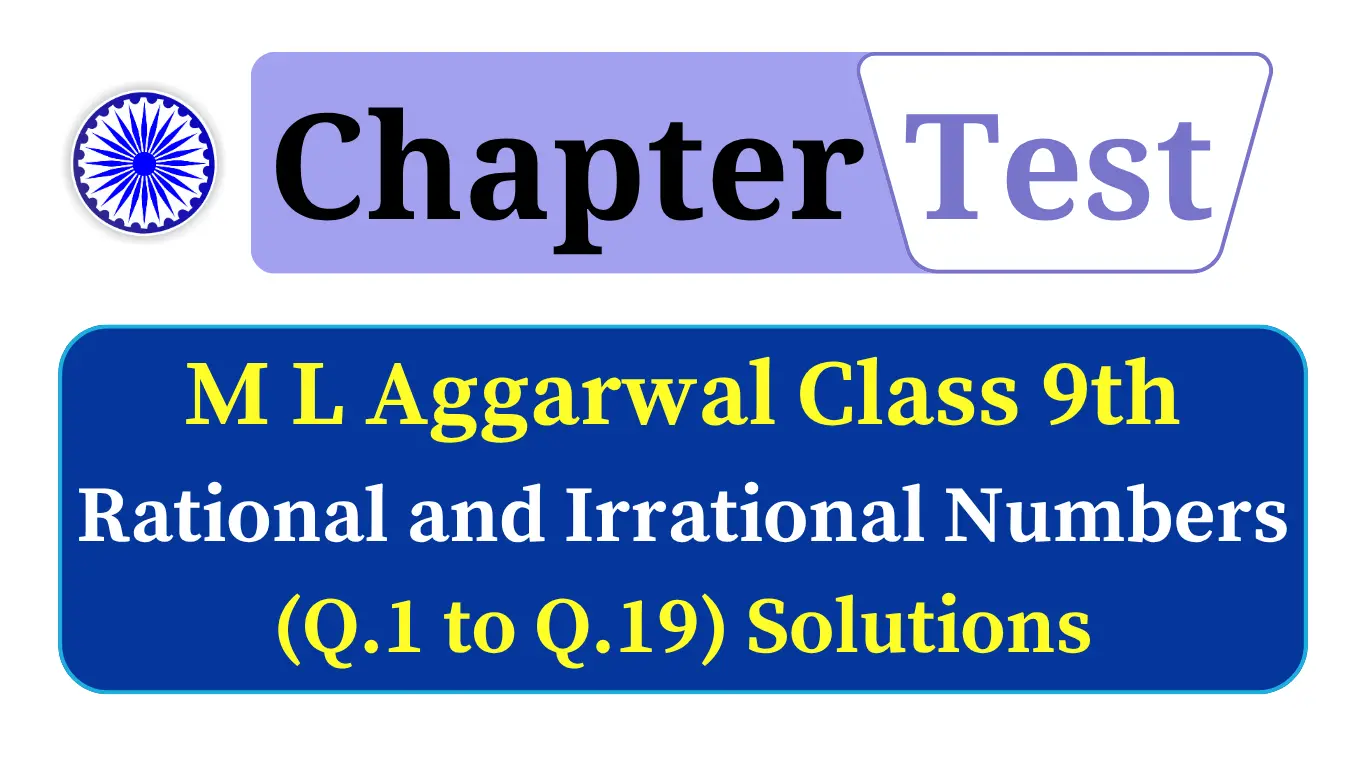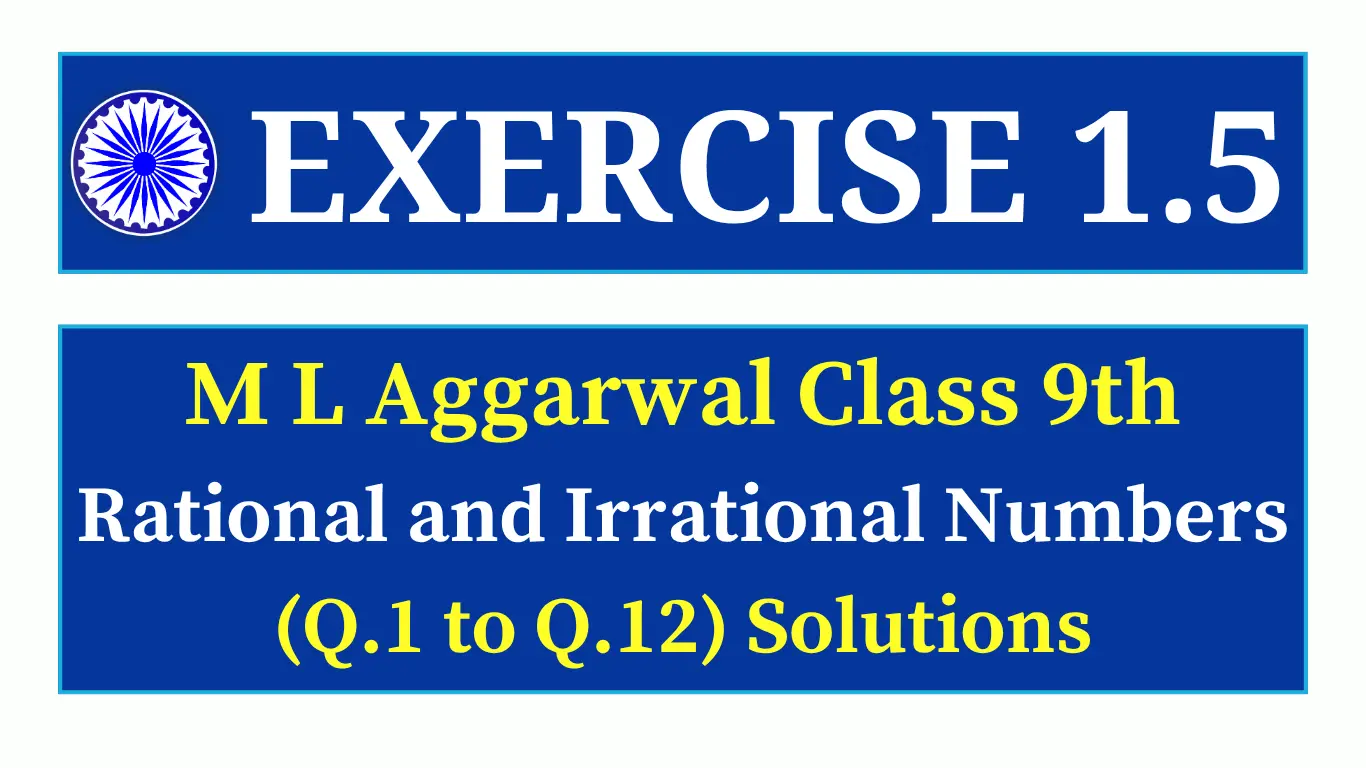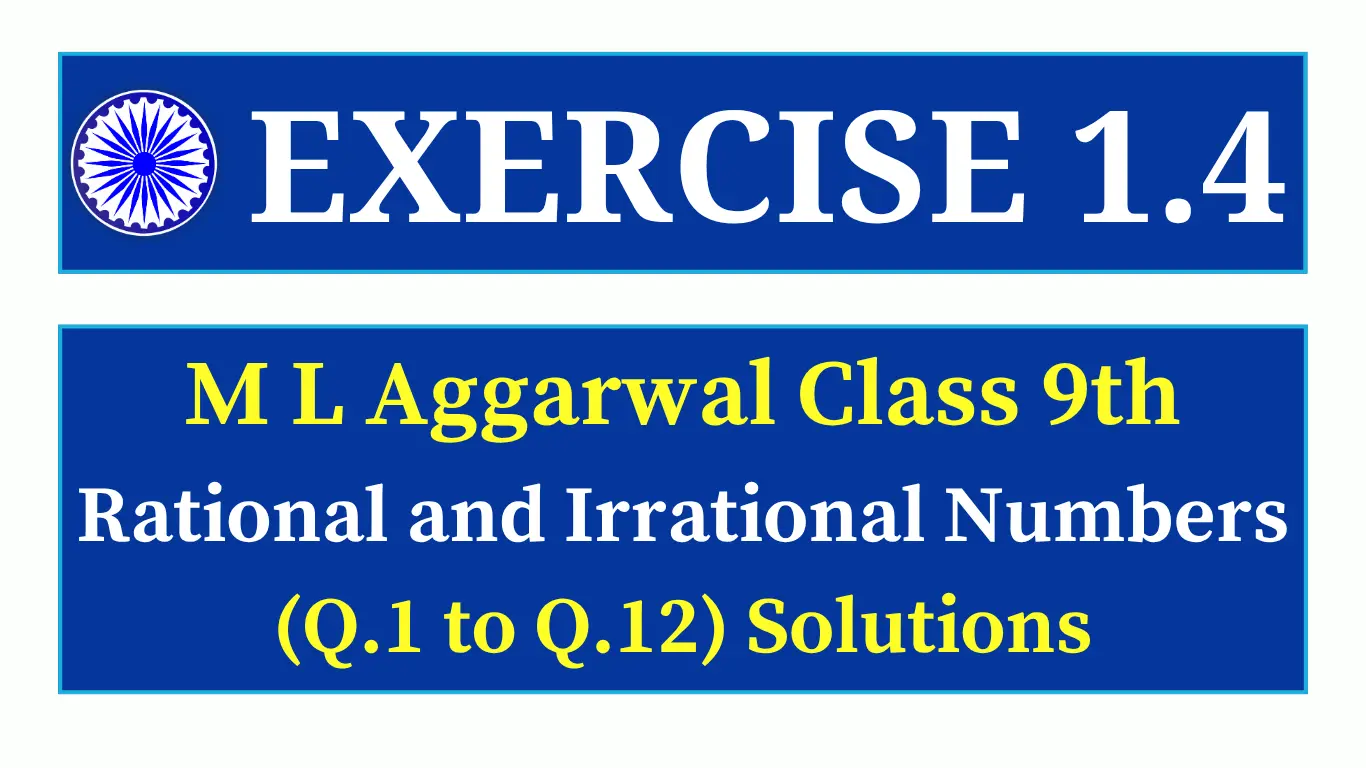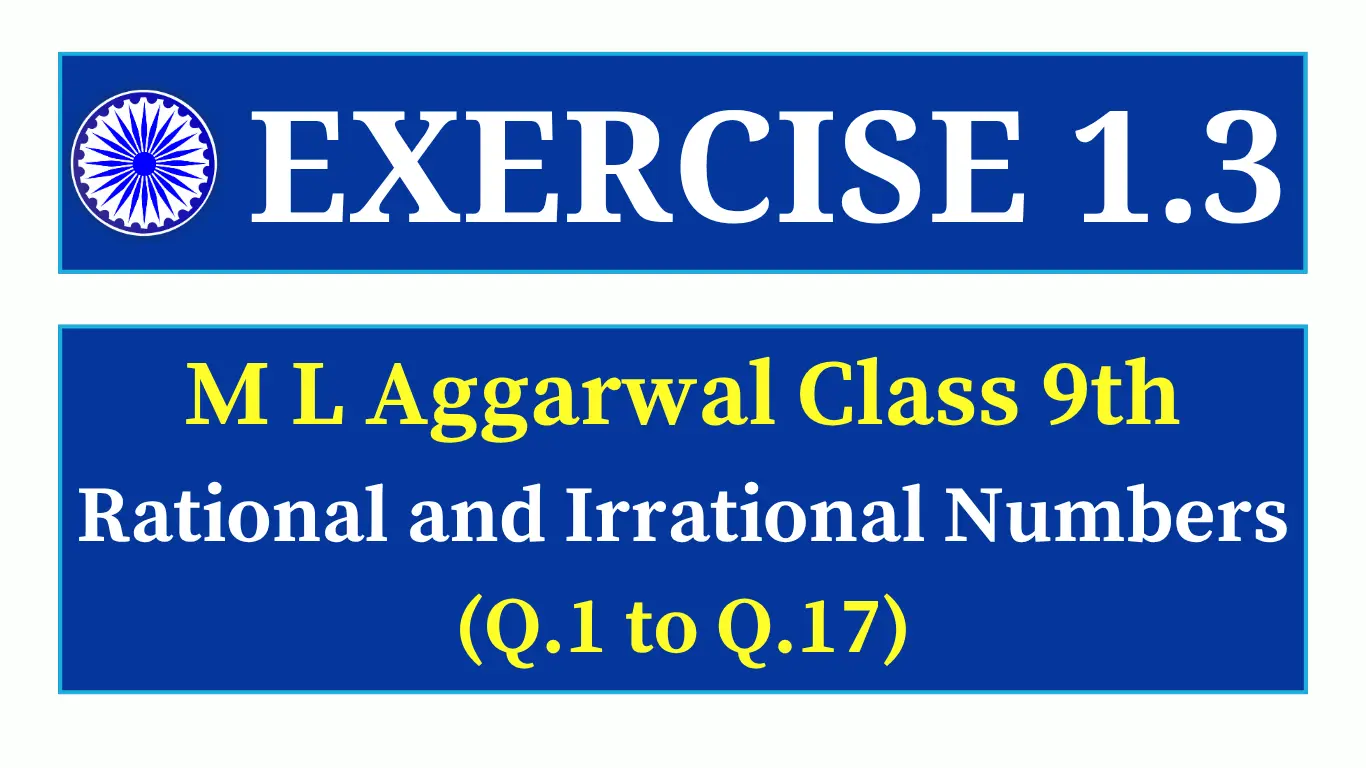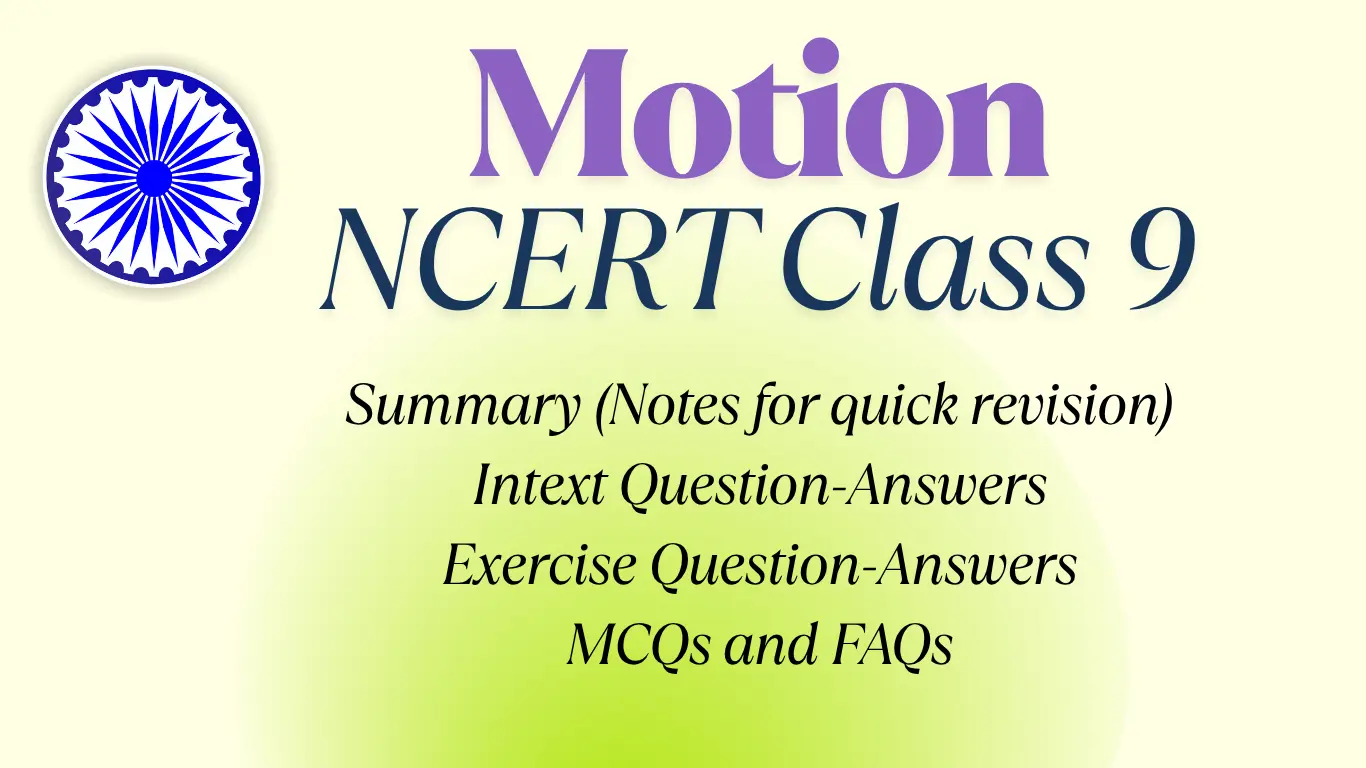
Exercise 1.2 ML Aggarwal Class 9 Solutions of Mathematics ICSE Textbook contains solutions of all 8 questions. The questions are based on irrational numbers.
Question 1 Exercise 1.2 ML Aggarwal Class 9 Solutions has been given below.
1. Prove that is an irrational number.
Answer
Let be a rational number, then
where are integers, and have no common factors other than 1.
... [∵ Squaring on both sides]
...
As is a multiple of 5,
5 divides .
5 divides ...
According to the theorem,
If is any natural number and is a prime number such that divides , then divides .
5 divides ... [∵ 5 is prime.]
Let , where m is an integer.
Substituting this value of in , we get
divides ... [∵ is a multiple of ]
divides
divides ... [From above theorem]
Now,
Since divides and both, and have a common factor 5. This contradicts that and have no common factors other than 1.
Thus, our supposition that is a rational number is incorrect.
Hence, we conclude that is an irrational number.
Question 2 Exercise 1.2 ML Aggarwal Class 9 Solutions has been given below.
2. Prove that is an irrational number.
Answer
Let be a rational number, then
where are integers, and have no common factors other than 1.
... [∵ Squaring on both sides]
...
As is a multiple of 7,
7 divides .
7 divides ...
According to the theorem,
If is any natural number and is a prime number such that divides , then divides .
7 divides ... [∵ 7 is prime.]
Let , where m is an integer.
Substituting this value of in , we get
divides ... [∵ is a multiple of ]
divides
divides ... [Using the above theorem]
Now,
Since divides and both, and have a common factor 7. This contradicts that and have no common factors other than 1.
Thus, our supposition that is a rational number is incorrect.
Hence, we conclude that is an irrational number.
Question 3 Exercise 1.2 ML Aggarwal Class 9 Solutions has been given below.
3. Prove that is an irrational number.
Answer
Suppose that is a rational number, then
where are integers, and have no common factors other than 1.
... [∵ Squaring on both sides]
...
As is a multiple of 2 and 3 both,
2 divides .
2 divides ...
According to the theorem,
If is any natural number and is a prime number such that divides , then divides .
2 divides ... [∵ 2 is prime.]
Let , where m is an integer.
Substituting this value of in , we get
As divides ,
divides ...
divides or divides
But, we know that 2 doesn't divide 3, so divides .
divides ... [From the above theorem]
∵ 2 divides both and , 2 is a common factor of and .
This contradicts the initial supposition that and have no common factors other than 1.
Hence, our supposition is wrong. Therefore, is an irrational number.
Question 4 Exercise 1.2 ML Aggarwal Class 9 Solutions has been given below.
4. Prove that is an irrational number.
Answer
Suppose that is a rational number, then
, where are integers, and have no common factors other than 1.
... [Squaring on both sides]
...
As 11 divides ,
⇒ 11 divides ...
According to the theorem,
If is any natural number and is a prime number such that divides , then divides .
⇒ 11 divides ... [∵ 11 is prime.]
⇒ is a multiple of 11.
Let , where m is an integer.
Substituting this value of in , we get
... [Dividing by 11 on both sides]
As divides ,
divides ...
divides ... [Using above theorem]
Thus, 11 divides as well as . It implies that 11 is a factor of and both.
It contradicts the fact that and have no common factors other than 1.
This contradiction arises due to the supposition that is a rational number. Hence, our supposition is wrong.
is not a rational number. So, we conclude that is an irrational number.
Question 5 Exercise 1.2 ML Aggarwal Class 9 Solutions has been given below.
5. Prove that is an irrational number. Hence, show that is an irrational number.
Answer
Let be a rational number, then
where are integers, and have no common factors other than 1.
... [∵ Squaring on both sides]
...
As is a multiple of 2,
2 divides .
2 divides ...
According to the theorem,
If is any natural number and is a prime number such that divides , then divides .
2 divides ... [∵ 2 is prime.]
Let , where m is an integer.
Substituting this value of in , we get
divides ... [∵ is a multiple of ]
divides
divides ... [From above theorem]
Now,
Since divides and both, and have a common factor 2. This contradicts that and have no common factors other than 1.
Thus, our supposition that is a rational number is incorrect.
Hence, we conclude that is an irrational number.
Now,
To Prove: is an irrational number.
Let is a rational number.
, where and are integers.
is a rational number, as and are integers.
is a rational number, but we have proved above that it is an irrational number.
This is a contradiction arises due to incorrect supposition that is a rational number.
Hence, our supposition that is a rational number is wrong. So, is an irrational number.
Question 6 Exercise 1.2 ML Aggarwal Class 9 Solutions has been given below.
6. Prove that is an irrational number. Hence, show that is an irrational number..
Answer
Let be a rational number, then
where are integers, and have no common factors other than 1.
... [∵ Squaring on both sides]
...
As is a multiple of 3,
3 divides .
3 divides ...
According to the theorem,
If is any natural number and is a prime number such that divides , then divides .
3 divides ... [∵ 3 is prime.]
Let , where m is an integer.
Substituting this value of in , we get
divides ... [∵ is a multiple of ]
divides
divides ... [From above theorem]
Now,
Since divides and both, and have a common factor 3. This contradicts that and have no common factors other than 1.
Thus, our supposition that is a rational number is incorrect.
Hence, we conclude that is an irrational number.
Now,
To Prove: is an irrational number.
Let is a rational number.
, where are integers.
is a rational number, as and are integers.
is a rational number, but we have proved above that it is an irrational number.
This is a contradiction arises due to incorrect supposition that is a rational number.
Hence, our supposition that is a rational number is wrong. So, is an irrational number.
Question 7 Exercise 1.2 ML Aggarwal Class 9 Solutions has been given below.
7. Prove that is an irrational number. Hence, show that is an irrational number.
Answer
Let be a rational number, then
where are integers, and have no common factors other than 1.
... [∵ Squaring on both sides]
...
As is a multiple of 5,
5 divides .
5 divides ...
According to the theorem,
If is any natural number and is a prime number such that divides , then divides .
5 divides ... [∵ 5 is prime.]
Let , where m is an integer.
Substituting this value of in , we get
divides ... [∵ is a multiple of ]
divides
divides ... [From above theorem]
Now,
Since divides and both, and have a common factor 5. This contradicts that and have no common factors other than 1.
Thus, our supposition that is a rational number is incorrect.
Hence, we conclude that is an irrational number.
Now,
To Prove: is an irrational number.
Let be a rational number.
, where are integers and .
is a rational number, as and are integers.
is a rational number, but we have proved above that it is an irrational number.
This is a contradiction arises due to incorrect supposition that is a rational number.
Hence, our supposition that is a rational number is wrong. So, is an irrational number.
Question 8 Exercise 1.2 ML Aggarwal Class 9 Solutions has been given below.
8. Prove that the following numbers are irrational:
(i)
Answer
Let us assume that be a rational number, say r.
Then,
As is rational, is also rational.
is rational. ....
But this contradicts the fact that is irrational.
Hence, our assumption is wrong. Therefore, is an irrational number.
(ii)
Answer
Let us assume that be a rational number, say .
Then,
is rational, is rational.
is rational.
is rational. ....
But this contradicts the fact that is irrational.
Hence, our assumption is wrong. Therefore, is an irrational number.
(iii)
Answer
Let us assume that be a rational number, say .
Then,
is rational, is rational.
is rational.
is rational. ....
But this contradicts the fact that is irrational.
Hence, our assumption is wrong. Therefore, is an irrational number.
(iv)
Answer
Let us assume that be a rational number, say . (Here, ≠ 0)
Then,
... [Squaring on both sides]
As is rational and
is rational.
is rational.
But, this contradicts that is irrational.
Hence, our assumption is wrong. Therefore, is an irrational number.
